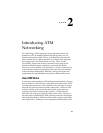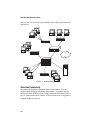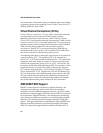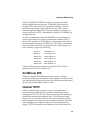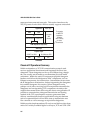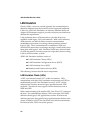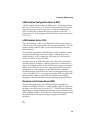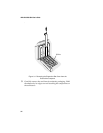
2-5
Introducing ATM Networking
ATM uses SONET and SHD technology to reduce costs while
achieving high transmission rates. Essentially, ATM combines
multiple STS-1 frames into STS superframes (STS-Nc, where N
stands for some integer value) and likewise for STM-1 frames.
Transmitting 8,000 single STS-1 frames at telephone company in a
second, referred to as STS-1 transmission, produces a 51.84 Mbit/sec
transmission rate.
An STS-3C transmission transmits 8,000 STS-3c superframes in a
second, each composed of three concatenated (combined) STS-1
frames. This produces a 155.52 Mbit/sec transmission rate which is
conventionally rounded to 155 Mbits/sec. The STS-3c transmission
rate is identical to the STM-1 transmission rate. ATM supports, or
will eventually support the following:
Adaptec ATM products currently support the STS-3C/STM-1
transmission rate of 155.51 Mbits/sec.
25.6 Mbit/sec ATM
ATM also supports 25.6 Mbit transmission speeds. Adaptec
products providing this transmission speed attach to switches which
can subsequently transport the data at any ATM transmission speed
necessary to reach another switch or node.
Classical TCP/IP
A data communication protocol is a set of conventions that
communicating entities observe to achieve unambiguous data
exchange and the TCP/IP suite of protocols is the most commonly
used data communication protocol suite. TCP/IP has prevailed
because it is an extensible, effective data communication protocol
suite designed from the ground up to integrate disparate networks
with heterogeneous computers. Because of its interconnectivity
origins, TCP/IP is essential to the Internet, which itself consists of
■
STS-1: 51.84 Mbits/sec
■
STS-3c: 155.52 Mbits/sec
■
STS-12c: 622.08 Mbits/sec
■
STS-24c: 1244.16 Mbits/sec
■
STS-48c: 2488.32 Mbits/sec
■
STS-192c: 9953.28 Mbits/sec







